As the world continues to shift towards sustainable energy, wind and solar power have emerged as two popular green energy options. The burning question to consider is wind vs solar which green energy is best?
Here we will compare the pros and cons of each energy source, and evaluate their sustainability, environmental impact, energy efficiency, and cost-effectiveness.
By the end of this article, you will have a better understanding of wind and solar energy and which one may be the best option for you and the environment.
Points Of Interest:
- Wind and solar power are two popular green energy options
- We will compare the pros and cons of each energy source
- Sustainability, environmental impact, energy efficiency, and cost-effectiveness will be evaluated
- By the end of the article, readers will have a better understanding of which energy source may be the best option
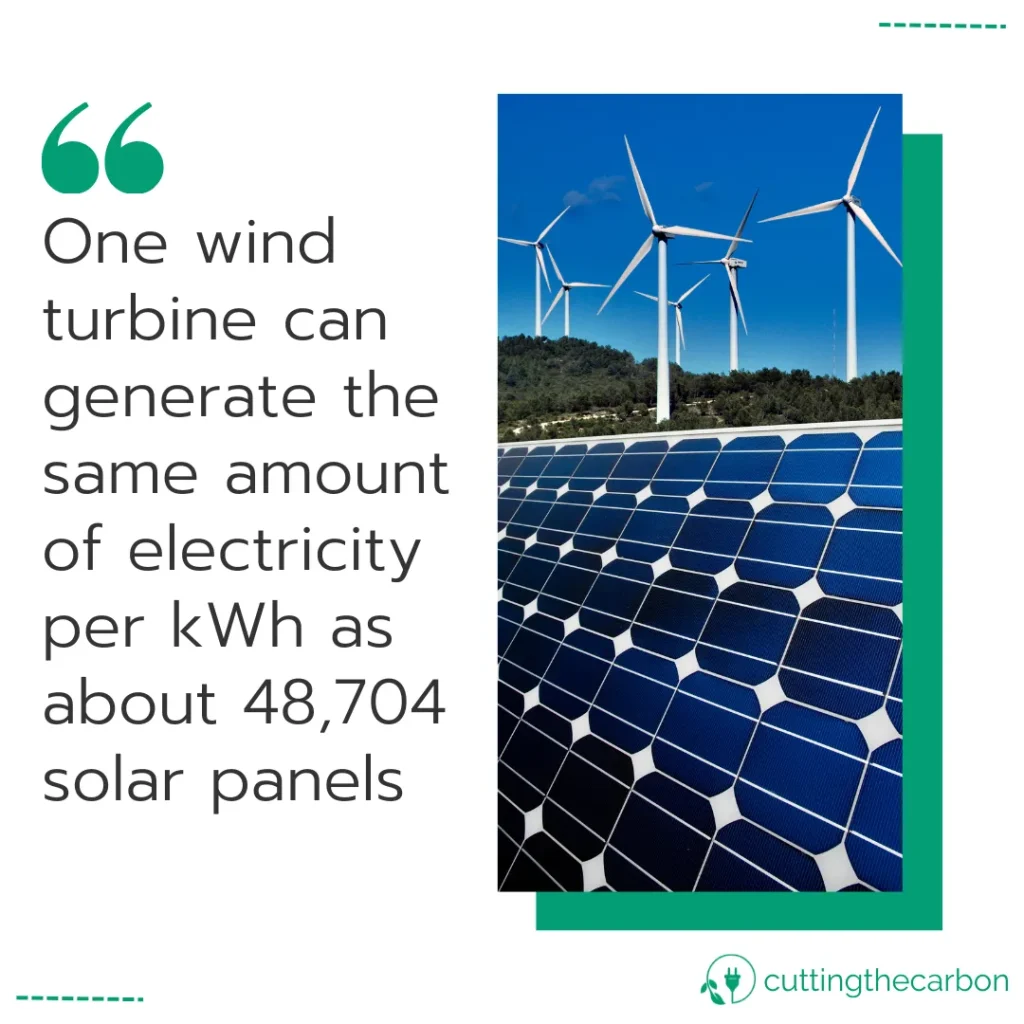
Understanding Wind Energy
As we compare wind and solar energy as green energy solutions, let’s first examine wind energy as a renewable energy source.
Wind energy offers numerous benefits and advantages as a clean and sustainable power source. Wind turbines, which convert wind power into usable electricity, have come a long way in terms of efficiency and capacity.
| Benefits of wind energy: | Advantages of wind energy: |
|---|---|
| – Wind energy is abundant and infinitely renewable. | – Wind turbines can be installed on land or offshore, in a variety of settings. |
| – Wind energy produces no greenhouse gas emissions or air pollution, reducing the carbon footprint of energy production. | – Wind turbines can operate in remote locations, providing electricity to communities that are off-grid. |
| – Wind energy is cost-effective, with a decreasing cost of wind turbines making it increasingly competitive with traditional energy sources. | – Wind turbines can generate electricity 24/7, providing a consistent and reliable source of power. |
While wind energy has its advantages, there are also factors to consider, such as its impact on the environment and local communities. However, as we continue to move towards a cleaner and more sustainable future, wind energy is sure to play an increasingly important role in our energy mix.

Examining Solar Energy
As we’ve already discussed, another renewable energy source that’s gaining popularity is solar energy. Solar panels are used to harness the energy from the sun and convert it into electricity.
The benefits of solar energy are numerous. First and foremost, it’s a clean and sustainable energy source that doesn’t contribute to carbon emissions or air pollution. Additionally, it’s a renewable resource that can be harnessed for as long as the sun continues to shine.
Solar energy is also incredibly versatile, with the ability to be used for everything from powering small devices to providing electricity for entire households. Solar panels can even be installed on rooftops, making it an excellent option for residential use.
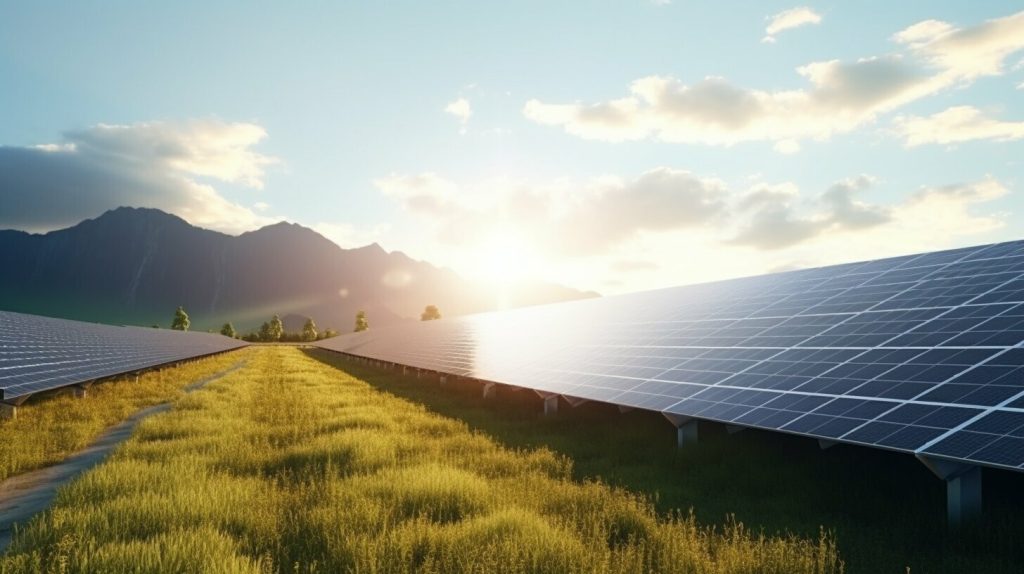
One of the challenges of solar energy is its efficiency. While solar panels have come a long way in terms of improving their efficiency in recent years, they still require direct sunlight to generate electricity. This means that solar energy may not be as reliable in areas with cloudy or overcast weather.
Overall, solar energy is a promising and rapidly growing green energy option that’s worth considering. While it may not be suitable for every situation, its benefits in terms of sustainability and environmental impact are significant.
Sustainability of Wind Energy
Wind energy is one of the most sustainable forms of energy available to us. By harnessing the power of wind, we can generate electricity without relying on fossil fuels.
This means that wind energy does not produce harmful emissions or contribute to global warming, making it an excellent choice for those who want to reduce their carbon footprint.
Furthermore, wind energy is a renewable resource, which means that we can continue to harness its power indefinitely. Unlike fossil fuels, which are finite resources that will eventually run out, wind energy is constantly being replenished by the natural processes of the earth.
Another advantage of wind energy is its minimal environmental impact. While wind farms do take up land, they do not produce harmful emissions or pollutants that can harm our environment. In fact, studies have shown that wind farms have a smaller impact on wildlife than traditional power plants.
Overall, wind energy presents a sustainable and environmentally friendly option for those seeking clean energy alternatives.
Renewable Energy Series: Solar Vs Wind Video:
Examining Solar Energy
In this section, we explore solar energy as another green energy option. Solar power is the conversion of energy from sunlight into electricity, either directly using photovoltaics or indirectly using concentrated solar power. Solar energy has many benefits and advantages as a clean energy source.
Firstly, solar energy is renewable and abundant. The sun is the most abundant source of energy available on Earth and will continue to shine for billions of years. This makes solar energy a sustainable and reliable source of energy for the future.
Secondly, solar energy has a minimal environmental impact. Unlike traditional energy sources, such as coal and oil, solar energy does not emit pollutants or greenhouse gases that contribute to climate change. This makes solar energy an environmentally friendly option that helps to protect the planet.
Solar panels are becoming increasingly efficient at converting sunlight into electricity. Advances in technology have led to the production of high-performance solar panels that can generate electricity even on cloudy days.
In addition, solar panels can be installed on rooftops, reducing the need for large areas of land for solar farms.
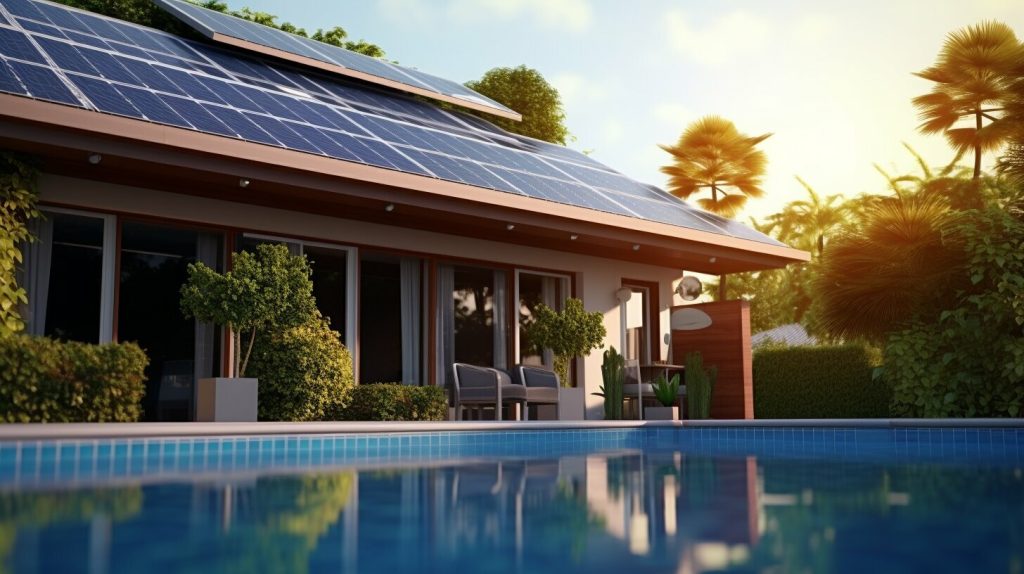
Overall, solar energy is a clean, sustainable, and efficient energy source that offers many benefits and advantages over traditional energy sources. In the next section, we will compare the sustainability of wind and solar energy to evaluate which green energy option is best.
Energy Efficiency of Wind Energy
Wind energy is a powerful and efficient source of clean energy. Wind turbines can convert the power of the wind into electricity that can be used to power homes, businesses, and cities. One of the biggest advantages of wind energy is that it is 100% renewable and can contribute to a sustainable energy mix.
Wind Power Benefits:
| Advantages | Explanation |
|---|---|
| Efficiency | Wind turbines can convert up to 50% of the wind’s energy into electricity, making it a highly efficient source of energy. |
| Low operating costs | Once installed, wind turbines have low operating costs, making them a cost-effective source of energy. |
| Reliability | Wind turbines can generate electricity even in low wind conditions, making it a reliable source of energy. |
| Minimal environmental impact | Wind energy has minimal environmental impact compared to traditional energy sources. It does not emit any greenhouse gases or other pollutants. |
Wind Power Advantages:
- Wind energy is a clean, sustainable, and renewable energy source.
- Wind turbines have a long lifespan and require minimal maintenance.
- Wind energy can reduce dependence on fossil fuels, mitigate climate change, and promote a green economy.
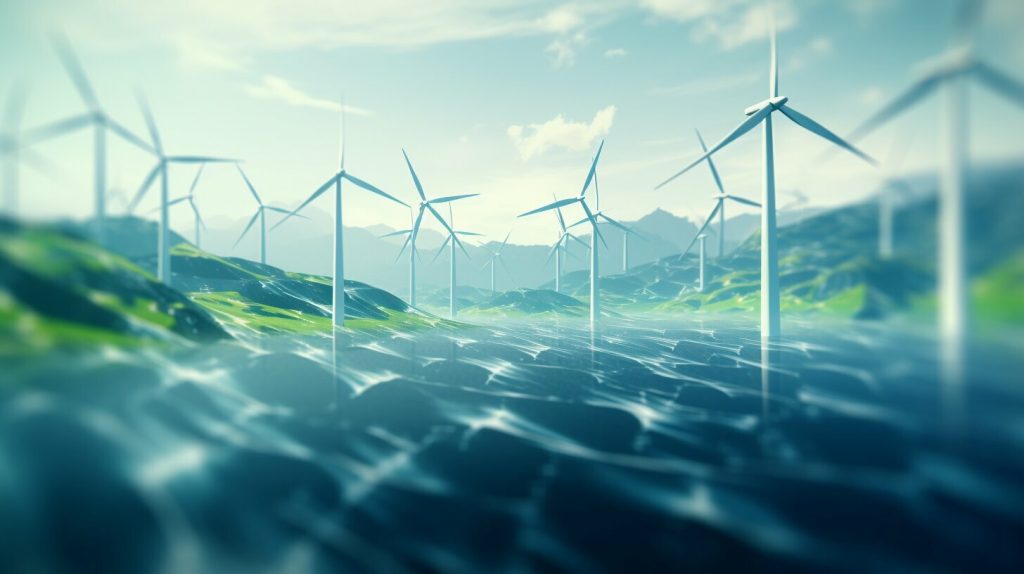
Wind turbines can generate electricity for many years, providing a steady source of sustainable energy. They are an essential part of the world’s transition to a cleaner and greener future.
Comparing Environmental Impact
When it comes to environmental impact, both wind and solar energy have significant advantages compared to traditional energy sources. Wind energy produces zero carbon emissions during its operation, while solar energy produces minimal emissions.
These renewable energy sources also require less water and land compared to fossil fuel-based power plants.
However, there are some differences between the two. Wind turbines have a larger footprint and can affect local wildlife such as birds and bats. Meanwhile, solar panels require rare earth minerals for their production, which can have negative environmental impacts on the mining process.
Both wind and solar energy have the potential to contribute to a cleaner energy mix and mitigate climate change. By reducing our dependence on fossil fuels, we can significantly reduce our carbon footprint and secure a more sustainable future.
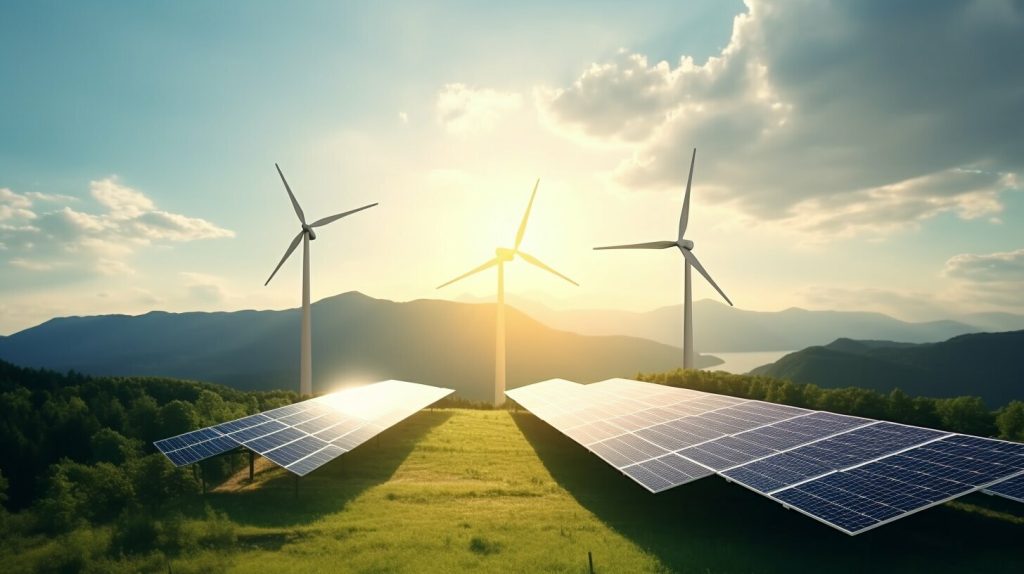
“Both wind and solar energy have the potential to contribute to a cleaner energy mix and mitigate climate change.”
Comparing Environmental Impact
When it comes to comparing the environmental impact of wind and solar energy, both renewable energy options have their advantages and disadvantages.
| Environmental Factor | Wind Energy | Solar Energy |
|---|---|---|
| Carbon Footprint | Wind energy has a low carbon footprint, producing close to zero emissions during operation. | Solar energy also has a low carbon footprint, producing close to zero emissions during operation. |
| Land Use | Wind turbines require more land than solar panels to generate equal amounts of energy. | Solar panels require less land than wind turbines to generate equal amounts of energy. |
| Other Environmental Factors | Wind turbines may pose a risk to birds and bats. They also require construction materials and transportation, which can contribute to emissions during manufacturing and installation. | Solar panels also require manufacturing and transportation, which can contribute to emissions. They may also pose a risk to desert ecosystems if not properly managed. |
Overall, both wind and solar energy contribute to reducing dependence on fossil fuel-based energy sources and mitigating climate change. However, the environmental impact of each energy source may vary depending on factors such as location, design, and management.
Cost Comparison
When it comes to comparing wind and solar energy, cost is an important factor to consider. Installing wind turbines and solar panels can require a significant initial investment, but the potential for long-term savings is also significant.
According to a report by the International Renewable Energy Agency (IRENA), the cost of both wind energy and solar energy has been steadily declining in recent years, making them increasingly competitive with traditional energy sources.
| Wind Energy | Solar Energy | |
|---|---|---|
| Initial cost | Higher due to the need for larger turbines and towers | Lower due to the modular nature of solar panels |
| Maintenance cost | Requires regular maintenance of turbines and towers | Requires less maintenance than wind turbines |
| Long-term savings | Potentially higher due to the ability to generate power in low wind conditions | Potentially higher due to the ability to generate power on cloudy days |
Overall, the cost-effectiveness of wind and solar energy as renewable energy options depends on various factors, including location, energy requirements, and government incentives. However, both wind and solar energy offer the potential for significant long-term savings and a cleaner energy mix.
Which is Better: Wind or Solar Power?
After examining the pros and cons of both wind and solar energy, it’s clear that both green energy sources have their advantages and disadvantages.
When it comes to sustainability, both wind and solar power are renewable energy sources with low environmental impact, making them great options for reducing greenhouse gas emissions and mitigating climate change.
In terms of energy efficiency, wind turbines have the advantage of being able to generate electricity even in low wind conditions. On the other hand, solar panels can generate electricity even on cloudy days. Both clean energy options provide a reliable and environmentally-friendly way to generate power.
When comparing the environmental impact of wind and solar energy, it’s important to note that both energy sources have a much lower carbon footprint and land use than traditional energy sources.
Both wind and solar energy also contribute to reducing dependence on fossil fuels and supporting a cleaner energy mix.
When it comes to cost-effectiveness, wind energy has a higher initial investment cost for installing turbines, but wind power has the potential for long-term savings.
On the other hand, solar panels have a lower initial investment cost but may require more maintenance. The cost-effectiveness of either wind or solar energy ultimately depends on specific needs and circumstances.
Overall, both wind and solar energy are great options for clean, sustainable energy. The choice between the two ultimately depends on individual needs and circumstances.
However, we would recommend considering both wind and solar energy as viable renewable energy options for a cleaner, greener future.

Green Energy Benefits
At a time when the impact of climate change is being felt across the globe, the importance of green energy cannot be overstated. Renewable energy sources such as wind and solar power offer a sustainable and cleaner alternative to traditional fossil fuels. Here are some of the key benefits of embracing green energy:
- Reduced carbon emissions: Perhaps the most significant benefit of green energy is its ability to reduce greenhouse gas emissions. Wind and solar energy produce no carbon emissions during operation, meaning less pollution and a cleaner environment.
- Renewable energy: Unlike fossil fuels, renewable energy sources such as wind and solar power are replenished naturally and infinitely, making them a reliable and sustainable source of energy.
- Clean energy: Green energy is a clean energy source, meaning it is produced with minimal environmental impact. Unlike fossil fuels, green energy does not produce harmful pollutants or contribute to air and water pollution.
- Promotes sustainable development: Embracing green energy solutions supports the United Nations’ Sustainable Development Goals, which aim to end poverty, protect the planet and ensure prosperity for all.
With the benefits of green energy clear, it is important that we continue to invest in and embrace renewable energy sources such as wind and solar power. By doing so, we can create a cleaner, more sustainable future for ourselves and generations to come.
Wind vs Solar Which Green Energy Is Best: Final Thoughts
In conclusion, both wind and solar energy are excellent green energy options that offer significant benefits for the environment and society as a whole. They are sustainable, efficient, and have minimal environmental impact when compared to traditional energy sources.
When comparing wind and solar energy, it ultimately depends on several factors, including location, energy needs, and budget. Wind energy is an excellent choice for areas with consistent wind patterns, while solar energy is suitable for areas with plenty of sunlight.
Both wind and solar energy have their advantages and disadvantages. Wind energy offers higher energy efficiency and is more cost-effective in the long run, while solar energy is more widely available and easier to install.
In the end, it is essential to evaluate all the factors carefully and choose the renewable energy source that best suits your needs. We encourage everyone to embrace green energy solutions and support a cleaner and more sustainable future for our planet and future generations.
FAQs
Which green energy is better, wind or solar power?
Both wind and solar power have their advantages and disadvantages. The best choice depends on factors such as location, available resources, and individual needs. It is recommended to evaluate the sustainability, energy efficiency, environmental impact, and cost of each option to make an informed decision.
What are the benefits of wind energy?
Wind energy is a renewable energy source that helps reduce reliance on fossil fuels. It has the potential to generate clean and sustainable power. Wind turbines are efficient in harnessing wind power and can contribute to a cleaner energy mix.
What are the advantages of solar energy?
Solar energy harnesses the power of the sun to generate electricity. It is a clean and sustainable energy source that helps reduce carbon emissions. Solar panels are efficient in capturing solar energy and can provide electricity even on cloudy days.
How sustainable is wind energy?
Wind energy contributes to a cleaner and greener future. It has minimal environmental impact compared to traditional energy sources and relies on renewable resources. When compared to solar energy, wind energy offers its own unique advantages in terms of sustainability.
How sustainable is solar energy?
Solar energy helps reduce carbon emissions and has minimal environmental impact. It relies on renewable resources, such as sunlight, to generate electricity. When compared to wind energy, solar energy offers its own unique advantages in terms of sustainability.
How energy-efficient is wind energy?
Wind turbines can efficiently convert wind power into electricity. They are capable of generating electricity even in low wind conditions. Wind energy contributes to a cleaner energy mix and offers various clean energy options.
How energy-efficient is solar energy?
Solar panels can efficiently convert solar energy into electricity. They are capable of generating electricity even on cloudy days. Solar energy contributes to a cleaner energy mix and offers various clean energy options.
What is the environmental impact of wind and solar energy?
Both wind and solar energy have minimal environmental impact compared to traditional energy sources. They help reduce carbon emissions, mitigate climate change, and reduce dependence on fossil fuels. Wind and solar energy contribute to a more sustainable future.
How do the costs of wind and solar energy compare?
The initial investment for installing wind turbines and solar panels can vary. However, both wind and solar energy have the potential for long-term savings. It is important to consider the cost of maintenance and evaluate the cost-effectiveness of each option as renewable energy sources.
What are the benefits of green energy?
Green energy, including wind and solar energy, contributes to a cleaner environment, reduces greenhouse gas emissions, and promotes sustainable development. Embracing green energy solutions offers positive environmental and social impacts.

